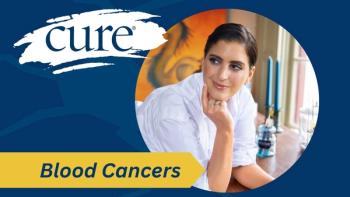
- CURE® Extraordinary Healer® Vol. 16
- Volume 16
Educating Patients Fulfills an Oncology Nurse's Dreams
An interview with Livia Szeto, B.S.N., RN, OCN, a finalist for the 2022 Extraordinary Healer® award.
When Livia Szeto, B.S.N., RN, OCN, was growing up, she wanted to be a teacher. And as an oncology nurse navigator at University of Chicago Medicine, teaching patients about their disease and upcoming treatment is a large part of her job.
That’s especially true when a patient receives a diagnosis of lung cancer.
“Imagine how desperate they can be,” she says. “Often they feel as though it’s the end of their world. Perhaps they were feeling normal but developed hip pain and were then told they had lung cancer. There’s a lot of hand-holding, teaching and reassuring that needs to happen.”
Originally a clinical trial research nurse, Szeto took on the additional role of oncology navigator six years ago. Although still involved with clinical trials, she also began caring for patients who weren’t in studies, taking care of them from their very first visit and throughout their cancer journey.
“That way the patient doesn’t have to interact with so many different nurses,” Szeto explains. “There’s just one primary nurse taking care of the patient. The navigator role can be pretty complex. You’re not only taking care of the patient but the family as well, helping them find their way through the health care system. They encounter many different specialties and need someone to help them understand them all.”
Although her first nine-and-a-half years at University of Chicago Medicine were spent on the inpatient hematology/oncology floor providing direct care for patients, today Szeto isn’t involved in much hands-on clinical treatment.
“My job is teaching and also coordinating care for patients, making sure their care is coordinated with the right provider, with the right timing for the right services. So although I don’t administer chemotherapy, the research coordinator and I do all the coordination for clinical trials,” she says.
Along with a physician and midlevel practitioner, Szeto sees patients in the clinic twice a week. Among the 20 or so patients they see each day are those returning for treatment and patients who have received a new diagnosis of lung cancer, some of whom first came to the hospital for a different reason.
“Last week, we saw a patient who presented in orthopedics for a fractured bone. One of the surgeons was very keen on lung cancer and scheduled a chest X-ray, which revealed a lung mass. So the patient will be getting a bronchoscopy this week to confirm lung cancer,” she says.
Sometimes patients who know they have lung cancer are eager to get started with treatment, only to find they have to wait.
“It’s hard to tell a patient that you need all these tests first and, no, you won’t be starting therapy until the test results — these molecular analyses — come back,” Szeto says. “They’ve heard that immunotherapy can often provide good results and want to know why they can’t get it immediately. But unless a patient has a specific actionable mutation, giving an immunotherapy drug could be detrimental to the patient. It takes a lot of education to help them understand.”
That education extends to informing patients of the realities of treatment.
“Regardless of how successful we are with patients and how many therapies we give them, the day will come when the disease starts to progress again,” Szeto says. “We have to warn them, ‘Therapy is going well, and we don’t want to be pessimistic, but one day the therapy will stop working.’ So we want to let them know that day is coming, but we also do our best to make sure it’s as far in the future as possible.”
Szeto strongly recommends that anyone mulling a nursing career consider oncology, pointing out that the job is not all doom and gloom, largely due to the major strides that have been made in treatment modalities. “It’s not as pessimistic as it used to be,” Szeto says.
“It’s a very exciting field to be in,” she notes. “Cancer patients are living a lot longer, so we have the opportunity to follow them for a long, long journey. In a way, cancer has become a chronic disease that can be managed. The beautiful thing is that patients have options that allow them to live with this disease for a long time.
“There are so many opportunities to learn and to help others.”
For more news on cancer updates, research and education, don’t forget to
Articles in this issue
over 3 years ago
I Wasn’t ‘Just a Patient’ to My Oncology Nurseover 3 years ago
The ‘Breast’ Nurseover 3 years ago
Bringing Hope and Healing to Patients With Cancerover 3 years ago
Unmatched Energy and Passion for Cancer Careover 3 years ago
An Oncology Nurse With a Heart Like No Otherover 3 years ago
Creating an Extraordinary Environment for Cancer Healingover 3 years ago
Compassionate Cancer Care Through Life and Death



